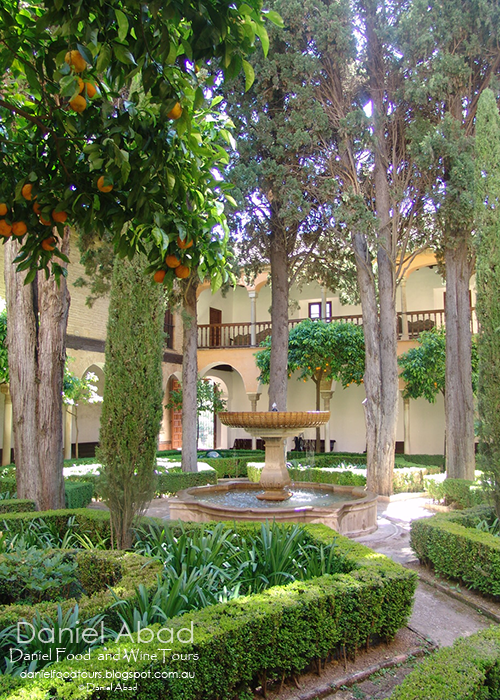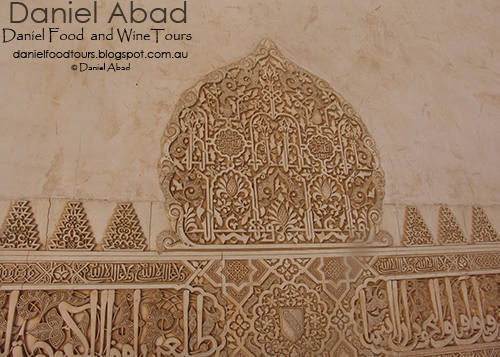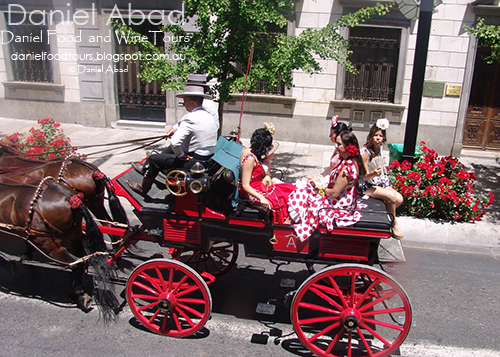The first Spanish city I visited in 2015 was
Granada. My friend and I left the coast
in the early hours of the morning under a typically spotless sky and warm Spanish
day. The weather, as we were nearing
Granada turned increasingly darker and on our arrival, the city welcomed us
with rain. I even had to buy an umbrella
simply to get about and check a few places in the old part of the city. Needless to say that my planned visit to the famous
Alhambra, located near Granada had to be cancelled. Despite the weather, I was completely taken
by the rare beauty and the historic past of that place during my brief
visit. I will definitely return to
Granada with hopefully a more clement sky on my side. My friend who had previously visited this
city generously provided me with some images of this amazing city.
 |
| Granada - Spain |
 |
| A Street in Granada - Spain |
Granada is
the capital of the province of Granada in the community of Andalusia in the south of Spain. It is
about 70km from the Mediterranean coast between Almeria and Malaga. It
is located at the foot of the Sierra Nevada Mountains and sits at an average
elevation of 700 meters above sea level.
It is the 13th-largest urban area of Spain.
 |
| One of the many churches in Granada - Spain |
A lamp post in a Granada Square
 |
| A lamp post in a Granada Square |
When the Moors arrived, the town was largely
inhabited by Jews. They called the
place” Garnat-al-Yahud” - Granada of the Jews. The Jews are said to have been one of the
first peoples to settle in Spain, even before the Romans.
 |
| Granada Moorish architecture - Spain |
Ornate footpath
 |
| Decorative design on the footpath made out of black and white pebbles. |
It was inhabited and
grew because it was easy to defend and although it is dry in the summer, there
is always a reliable supply of water coming from the mountain that is fuelled by
melting snow. The rich soil in the Vega plain
therefore has provided an ample food source for many centuries.
 |
| Shop front in Granada - Spain |
The region has
experienced Roman and Visigoth influences. The Arabs, invading the peninsula in the 8th
century, gave it its current name of Granada. At some point, the various Christian groups in
the area settled their differences, joined together and steadily drove the
Arabs out of Spain. Granada was the last
stronghold.
 |
| Church entrance - Granada, Spain |
The Moslems and the Jews were forced to
leave the country or convert to Christianity.
At the same time, Christopher Columbus came to Granada to ask Isabel and
Ferdinand for a grant to build ships so that he could conquer the Americas. They gave him the money and the rest is
History.
One of the most
brilliant jewels of universal architecture is the Alhambra; a series of palaces
and gardens built under the Nazari Dynasty in the 14th Century. This mighty compound of buildings with its fountains
and gardens overlooks the city below. The construction works of the Alhambra were undertaken in the 13th and
14th centuries, with most of the Alhambra having been built between 1333 and
1354. The Alhambra was declared a World
Heritage Site by UNESCO in 1984. It is
certainly one of the most visited monuments in Spain.
 |
| One of the many gardens in the Alhambra |
Amazing gardens and fountains...
 |
| A fountain at the Alhambra |
A view from the Alhambra
 |
| Partial view of Granada - Spain from the Alhambra |
 |
| Wall decoration at the Alhambra |
In Granada, the Sacromonte hill is one place where you can enjoy Flamenco. The hill overlooks the city
from the North and is famous for its cave dwellings. It was once the home of Granada's large gypsy
community. The
gypsies arrived about 600 years ago and one of the places where they
congregated was in the caves of the Sacromonte.
The mixture of Arabic influence combined with the particular lifestyle
and temperament of the gypsies created Flamenco.
 |
| Traditional Spanish Flamenco Outfit |
 |
| Ladies in Traditional Spanish Outfits |
Probably the most famous “Granadino”
(Granada inhabitant) is the well-known playwright and author Garcia Lorca. He is reputed to be one of the best writers of
the twentieth century. What makes him
even more memorable is the fact that during the bloody Spanish civil war
1936-39, he was taken to a village near Granada and shot by a firing squad.
However short and wet my visit to Granada
was, I still enjoyed it immensely.
















No comments:
Post a Comment